Quentin Blake does Macbeth – with whisky
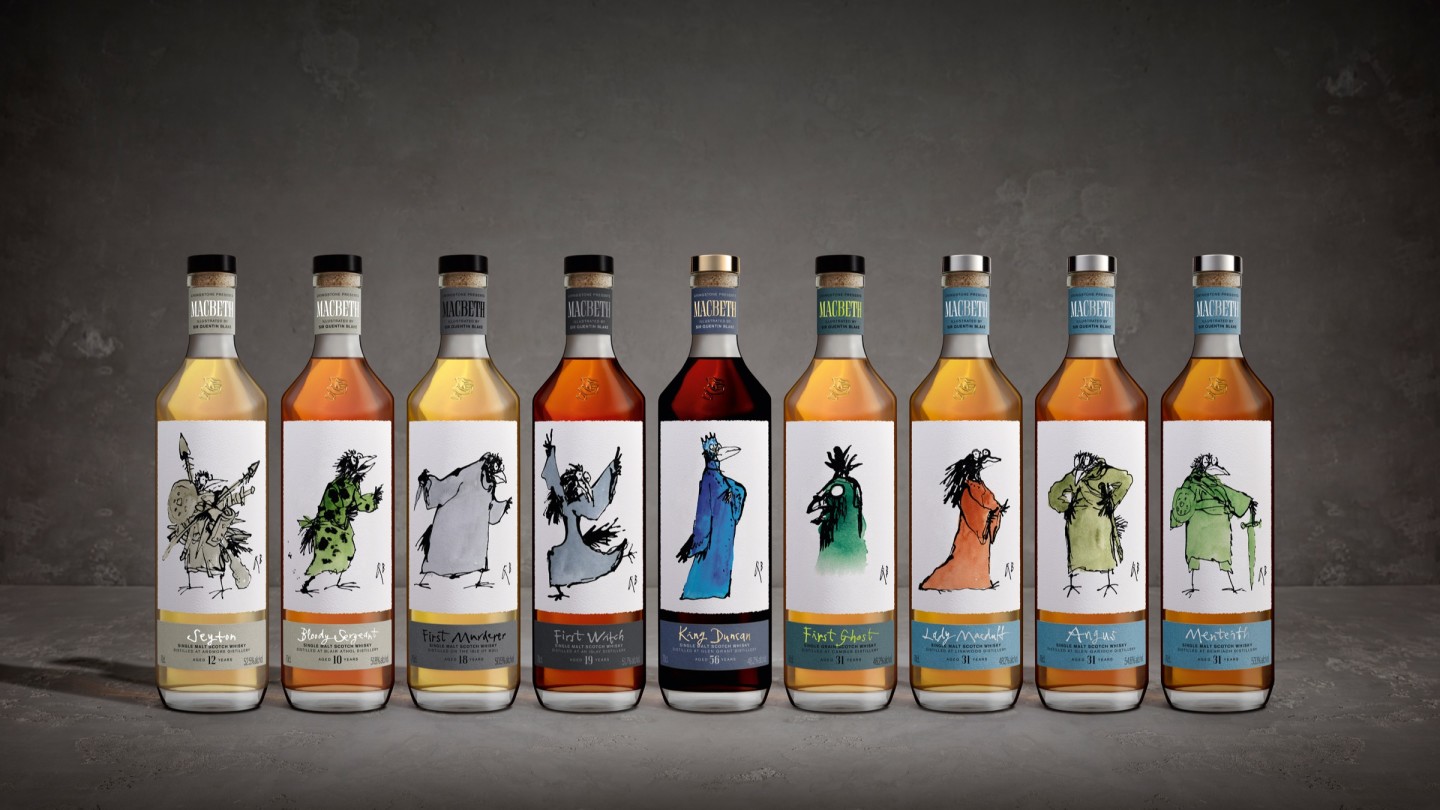
Roula Khalaf, Editor of the FT, selects her favourite stories in this weekly newsletter.
Sir Quentin Blake turned 90 in December, but the renowned illustrator continues to work at a prodigious rate. This month, he is making his first foray into Scotch, with a series of labels specially drawn for “Macbeth”, a collection of 42 whiskies inspired by Shakespeare’s tragedy. Each of the whiskies has been chosen as a liquid “likeness” to a character in the play; each bottle in the series is also illustrated with a nib-and-ink portrait of that character by Blake.
The setting for them may be unfamiliar, but the characters leap off the page with a messy energy, emotion and humour that’s impossible to mistake. The crow-like armour bearer Seyton (played by a mineral 12yo Ardmore, with a flinty, floral edge) wrestles with a comical haul of weaponry, while a corpulent First Murderer (played by a splendidly feral 18yo island single malt) looms with a dagger behind his back; the First Witch (an infernally peaty 19yo Islay malt) flings her arms in the air in an evil rapture; while King Duncan (a distinguished 56yo, single-cask Glen Grant) looks on, as statuesque as a heron, in indigo robes.
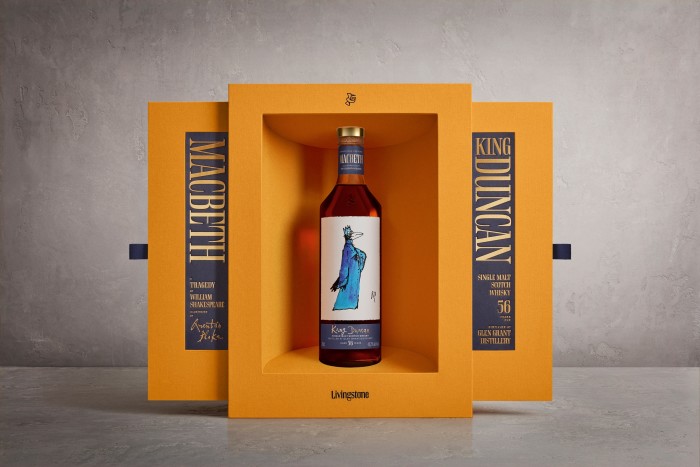
Sourced by Elixir Distillers, and accompanied by lyrical notes by writer Dave Broom, the collection features whiskies of all kinds of styles and ages. There are blends, malts and grain whiskies, up-and-coming producers and silent ghost distilleries (they’re the Ghosts, of course), drawn from all over Scotland.
Prices start at around £100 for one of the minor characters and rise to £10,000 plus for one of the leads: Macbeth, Lady Macbeth, King Duncan, Banquo and Macduff (of which there are only 100 of each). The collection will be released in three “acts”, culminating in Macbeth and a secret 42nd bottling, over the next three years.
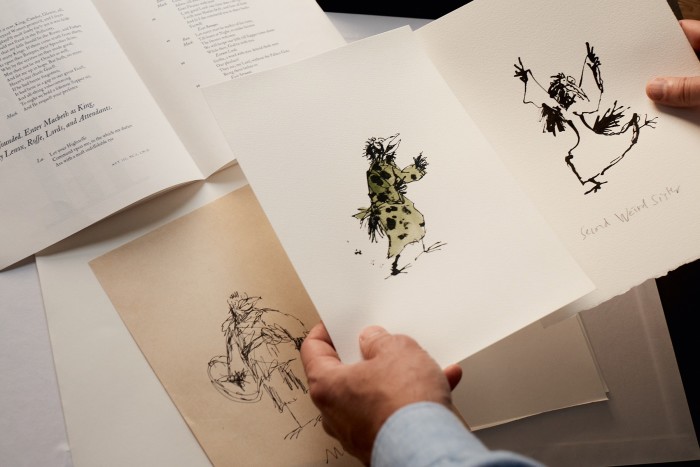
The Macbeth collection is the brainchild of Lexi Burgess, founder of the Livingstone project space and Burgess Studio, a design agency specialising in design for rare whiskies for brands such as The Macallan, William Grant & Sons and Bowmore.
“Over the years, I’ve grown increasingly absorbed by the histories of distilleries and the people around them,” explains Burgess. “Stories of allegiances and collective endeavour, but also ruthless ambition and intense rivalries. I thought, ‘This is just like Macbeth.’ And that was it. The whole structure appeared in that one moment; the most famous Scottish play, full of fantastic characters from across Scotland, bright to dark, light to heavy, from every class and realm, at different ages, all waiting to be cast as Scotch whiskies.”
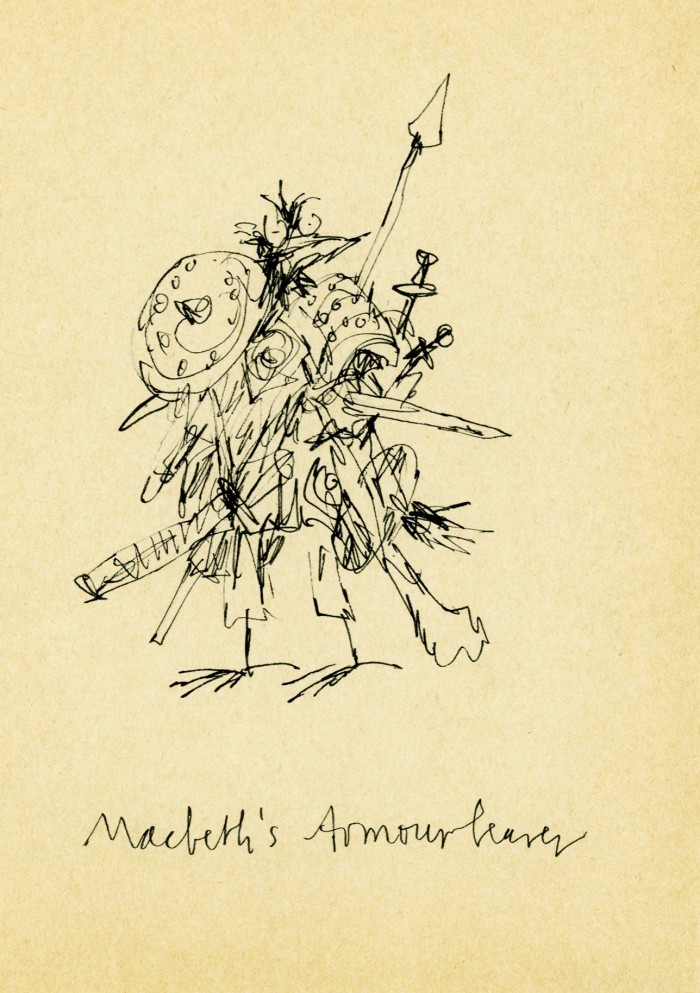
Blake’s illustration for Seyton, the armour bearer...
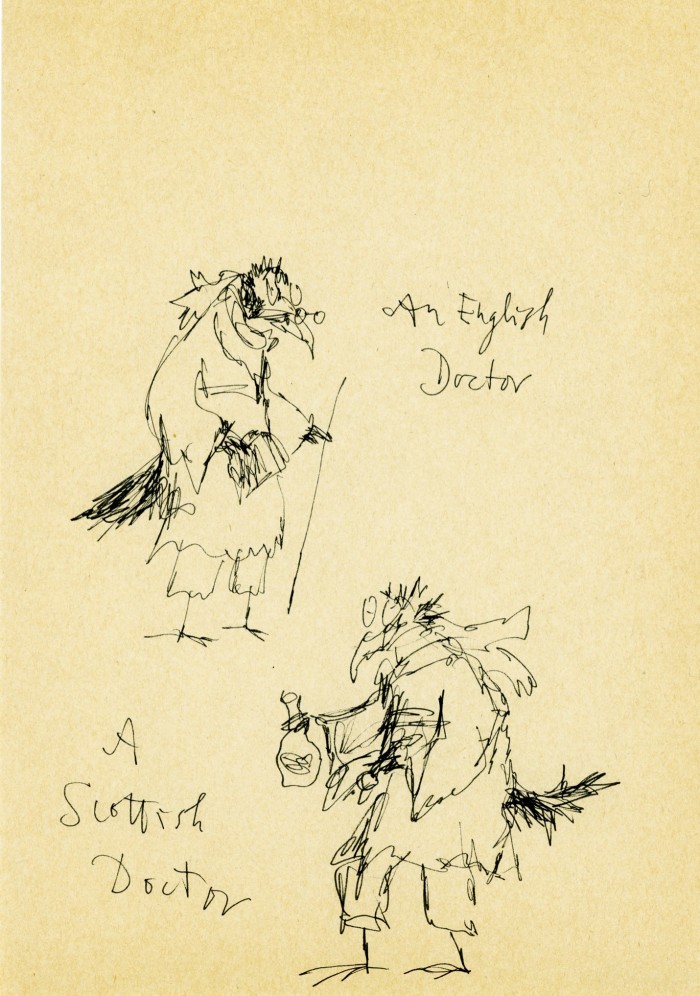
...and the doctors
Burgess had designed a number of exhibitions and books for Quentin Blake in the past – so he approached him to draw the characters. And, aware of the artist’s love of ornithology, he suggested he do them as birds. “The idea appealed to me immediately,” says Blake, an “avid” birdwatcher since childhood. “I woke very early one morning – I do draw in bed a lot – and by 10am I was able to phone Lexi to say that I had done some pencil drawings. These were later redrawn with a scratchy Indian ink standing at my desk.”
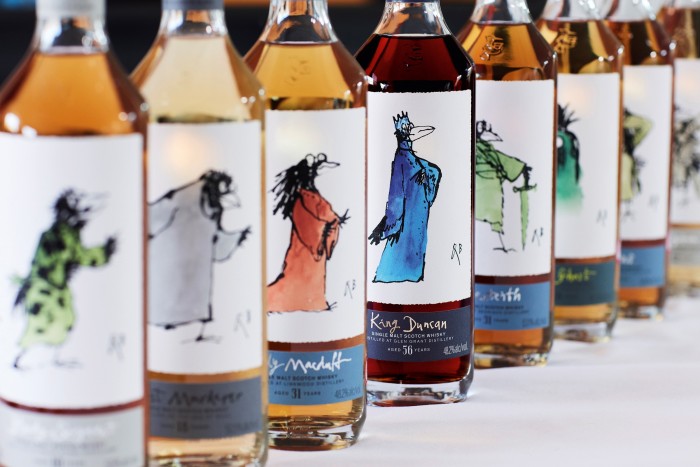
Blake’s “constant” interest in Shakespeare meant he already knew the play “pretty well” – and the theatrical nature of the project resonated with him: “I’ve always thought of illustration as a kind of acting. I don’t observe the gestures so much as feel them.”
The Macbeth collection is unique in the world of whisky, says Broom, “because it runs counter to the way things like this would normally be done. It wasn’t a case of ‘We have this whisky, where it’s going to go?’ It’s driven by the text.”
“And the best thing is, people know the characters,” adds Burgess, “and have opinions about them. This project changes the way you think about the drams. Rather than being, ‘Is this a good example of a such and such bourbon cask?’, it’s ‘Is this Banquo?’, which is a more entertaining conversation.” And I’m inclined to agree.
Available to buy from 27 February at thewhiskyexchange.com and livingstonerare.com
Comments